- At the time of its construction in 1973, the Haymarket had the largest theatre stage in the country
- The theatre’s musical director Rupert Mandell created many successful shows for London and Broadway, such as Joseph and The Amazing Technicolour Dreamcoat and My Fair Lady
- The Metal Tree sculpture unveiled outside in 1974 was the first piece of abstract public art in Leicester
A New Home for Theatre
In the mid-20th century, Leicester had been without a home for professional theatre for some years, with the closure of older traditional theatres such as the Theatre Royal in 1957. The Haymarket Theatre opened on 17 October 1973, opposite the site of the old Victorian Palace Theatre on Belgrave Gate. It was built as part of the wider Haymarket Shopping Centre scheme, which opened in June that same year.
The new Haymarket Theatre was designed by Stephen George and Dick Bryant from Leicester Corporation’s Architects Department. They had previously converted a former warehouse in Newarke Street into Phoenix Arts, intended as a temporary home for professional theatre whilst the Haymarket was being constructed.
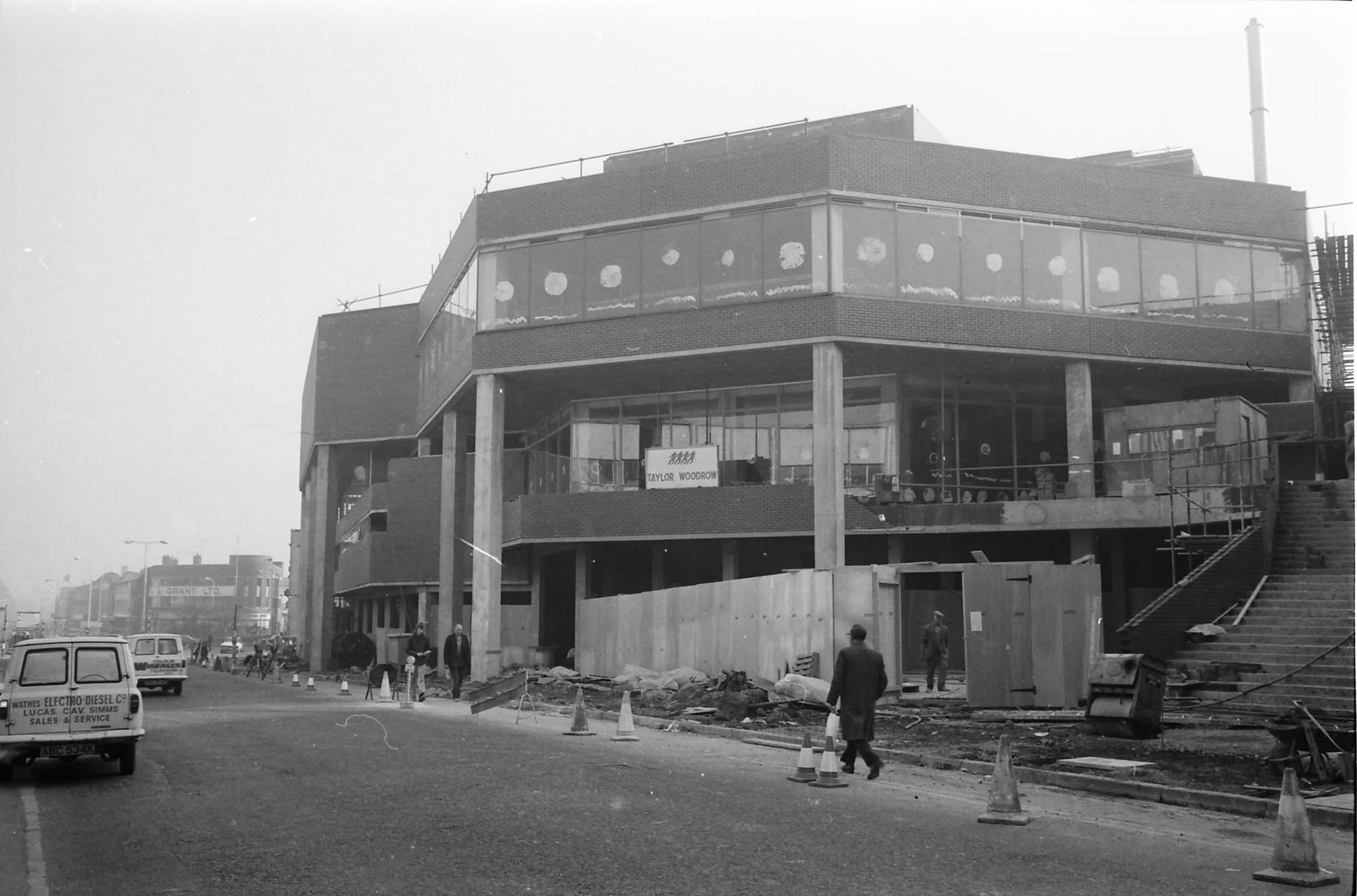
The Largest Theatre Stage in the Country
At the time of its construction, the Haymarket Theatre had the largest theatre stage in the country, and its overall design was imaginative and ground-breaking. The large foyer and bar areas were able to accommodate large numbers and wide stairs, reminiscent of many classic cinema foyers, led into the main auditorium. This fan-shaped auditorium provided an unobstructed view of the entire stage area from every seat. The balcony gave an architectural ‘nod’ to classic theatres of the past, with five blocks at different levels which all cleverly linked. Together with an orchestra pit at the front of the stage, the Haymarket was capable of staging large-scale productions with ease.
The high fly tower extended over part of the auditorium which provided creative directors with an opportunity to design sets which connected very effectively with the audience. It was not unusual for actors in a play to enter from the back of the auditorium! Backstage, as well as offices, dressing rooms and storage, a large rehearsal space was available which was later converted into a studio theatre accommodating 120 people. Many local theatre groups and youth workshops were able to use this space instead of the main stage.
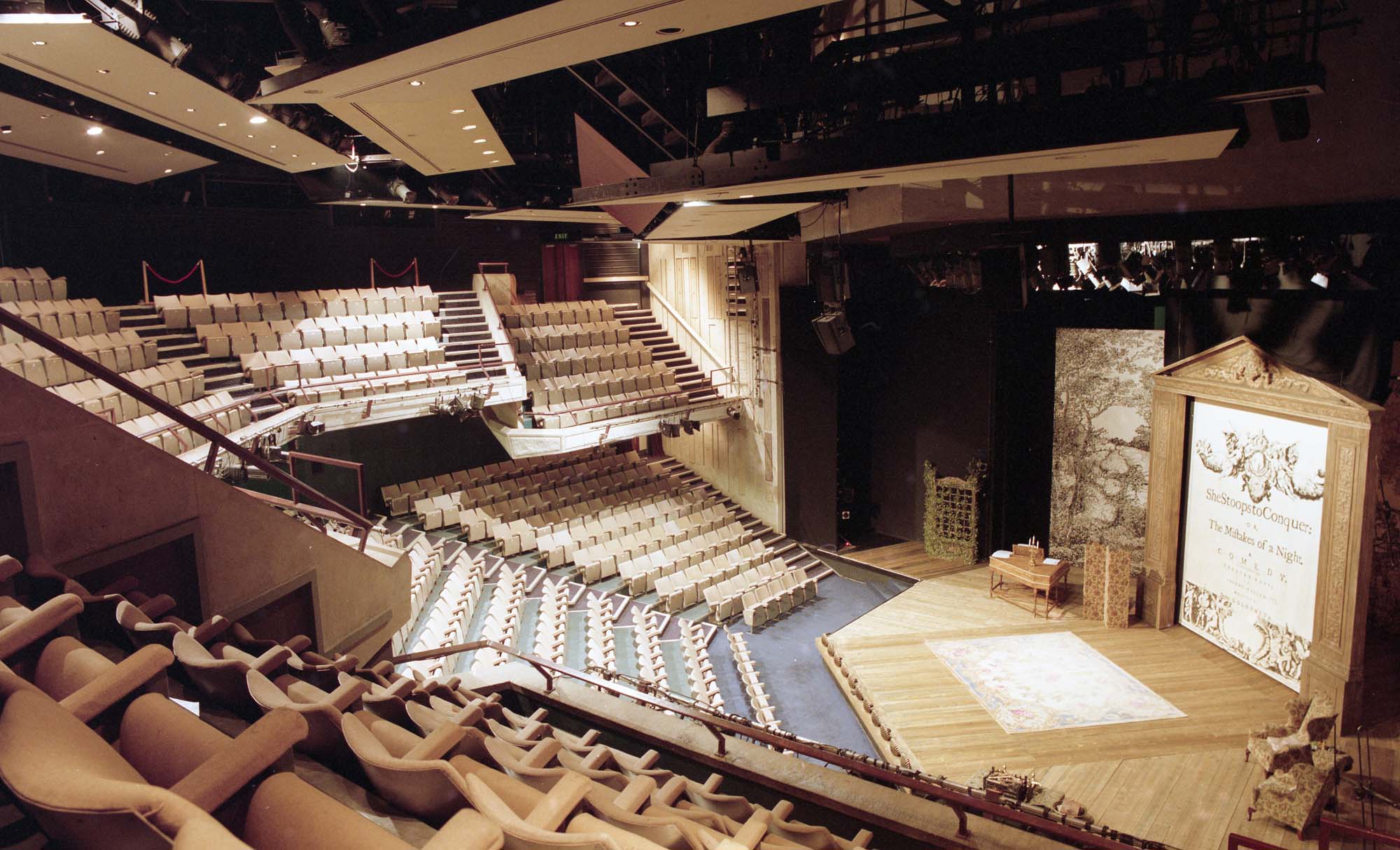
The Metal Tree sculpture at the entrance to the theatre was one of the last works by Hubert Cyril Dalwood. Unveiled in 1974, the sculpture was the first piece of abstract public art in Leicester.
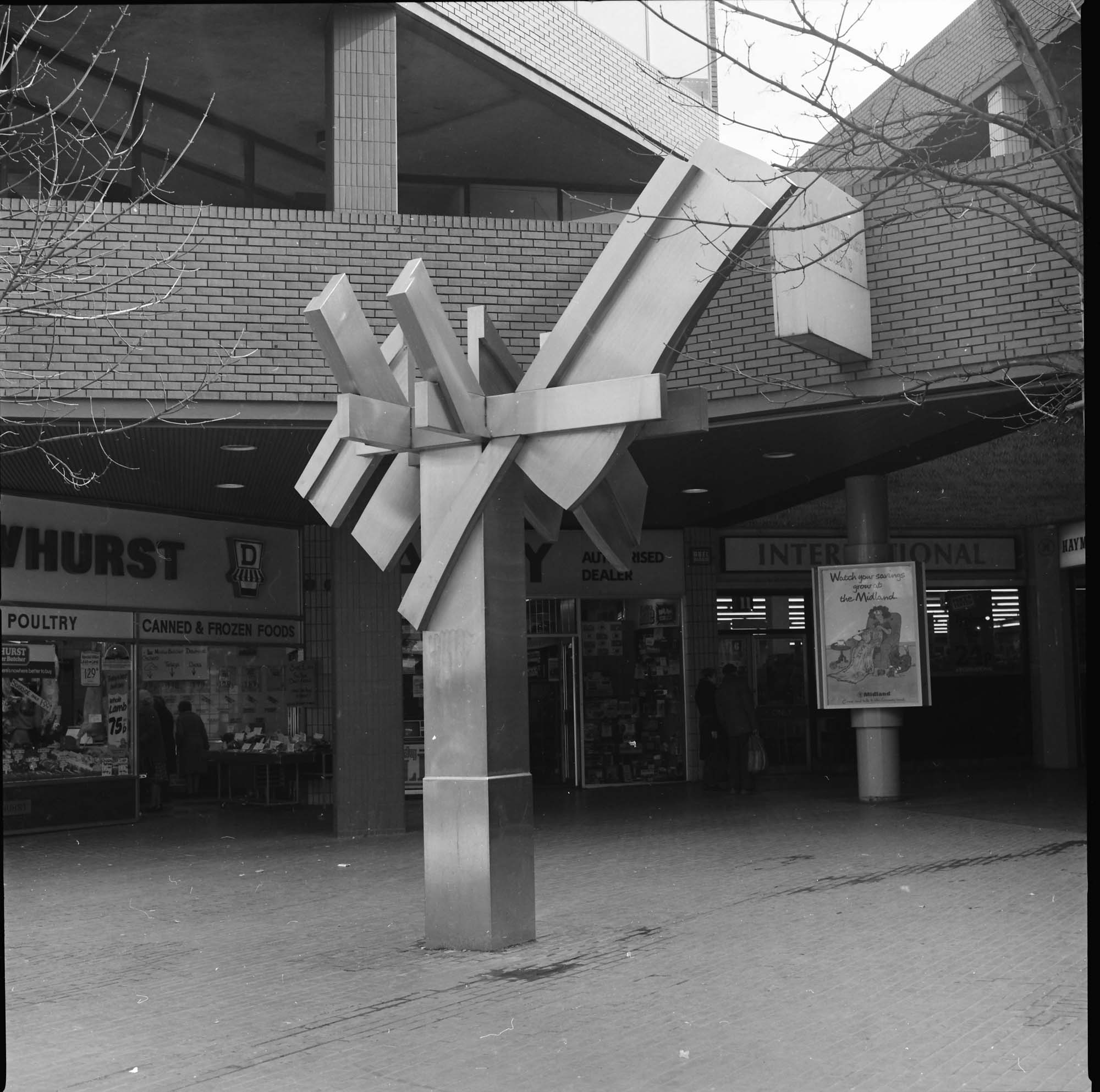
Famous Directors and Performers
In the first season of the theatre opening, theatregoers were able to see The Recruiting Officer, the classic comedy play from 1706 by the Irish writer George Farquhar, Economic Necessity, a new play in 1973 by John Hopkins and starring Anthony Bate, and the musical Cabaret.
For many years the Haymarket’s musical director was New Yorker, Robert Mandell. He created a string of successful musicals, some of which transferred to the London stage and even Broadway. They included Joseph and The Amazing Technicolour Dreamcoat; The Boyfriend with Mariam Harlin and Elaine Paige; My Fair Lady; Oklahoma; and Oliver, starring Roy Hudd as Fagin.
The Haymarket Theatre attracted many young people who aspired to a career on stage including Parminder Kaur Nagra, known for playing Jess Bhamra in the film Bend It Like Beckham and Dr Neela Rasgotra in the NBC medical drama series ER. Other actors were Rakhee Thakrar who is best known for portraying the role of Shabnam Masood in the BBC soap opera EastEnders and Emily Sands in Netflix series Sex Education.
A Fine Legacy of Productions
The theatre was operated by The Leicester Theatre Trust, but productions were transferred to the new and larger Curve Theatre when it opened in Leicester’s Cultural Quarter. The Haymarket Theatre closed in 2007. The last production was The Wizard of Oz with Helena Blackman and Ceri Dupree.
The theatre remained closed until the city council funded an extensive refurbishment programme. It re-opened in 2018 and operated for two years until it was forced to close in March 2020 during the Covid-19 pandemic. In 2023 it re-opened as a teaching and performing base for a dance school in the city.
Gallery
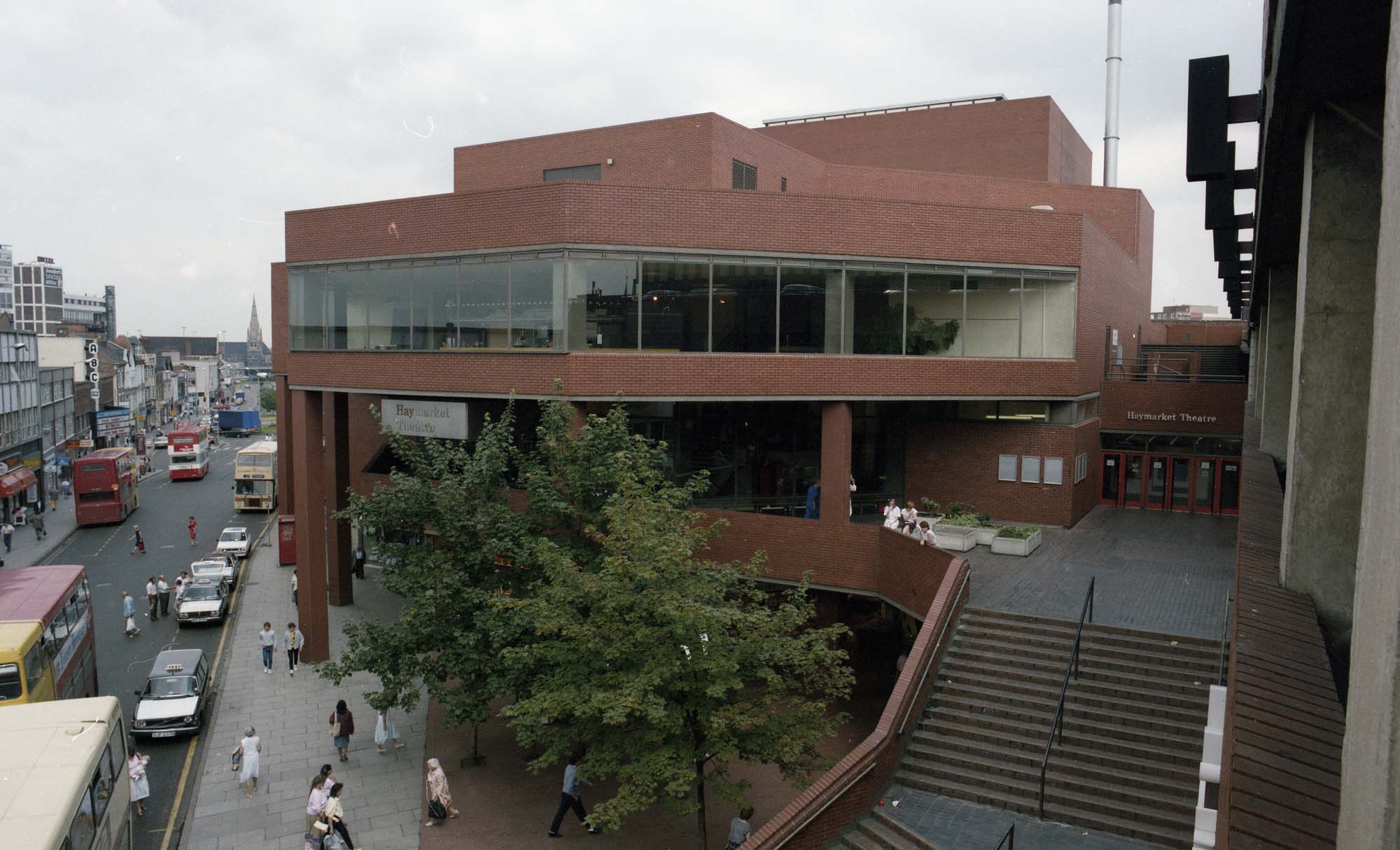
Leicester City Council
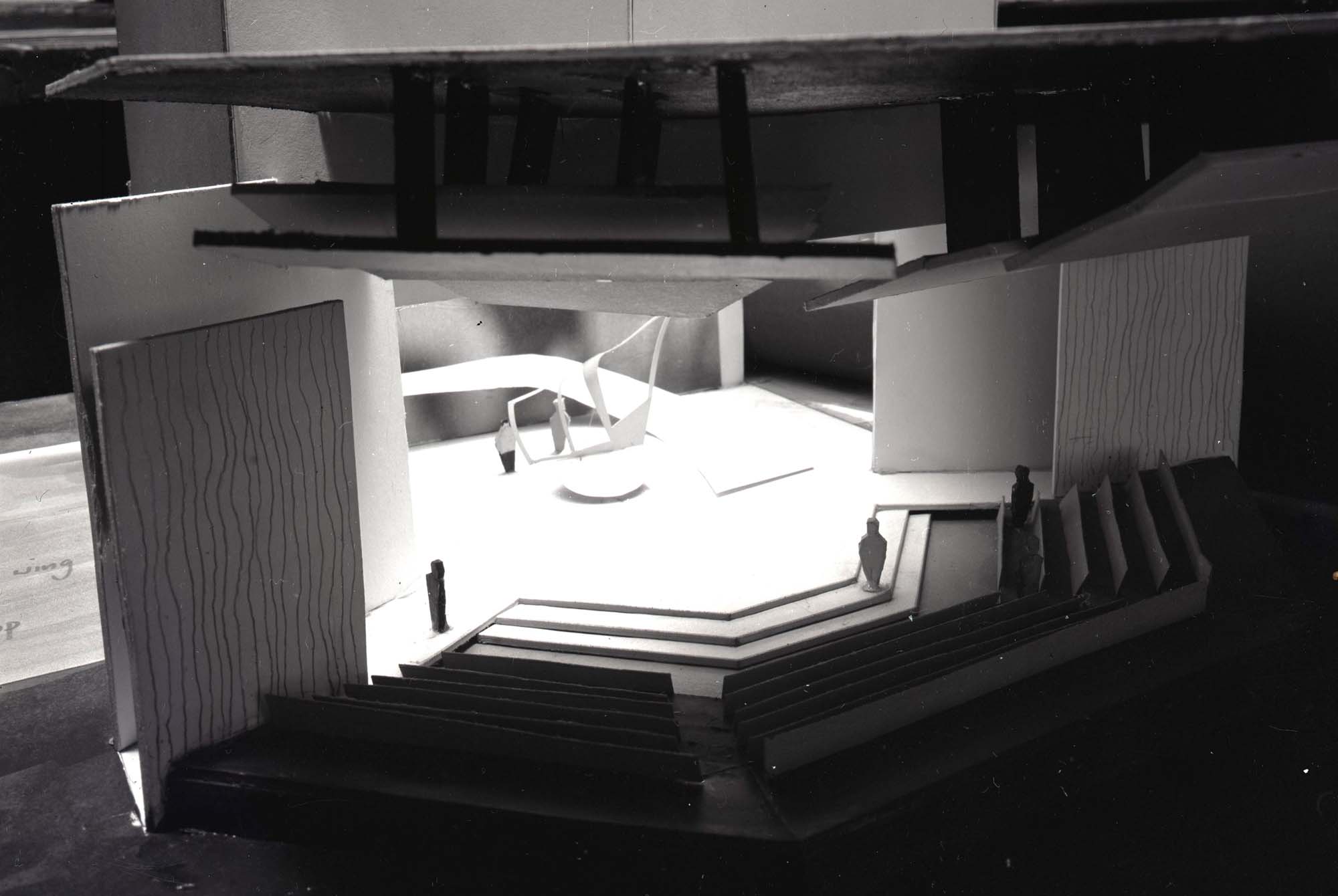
Leicester City Council
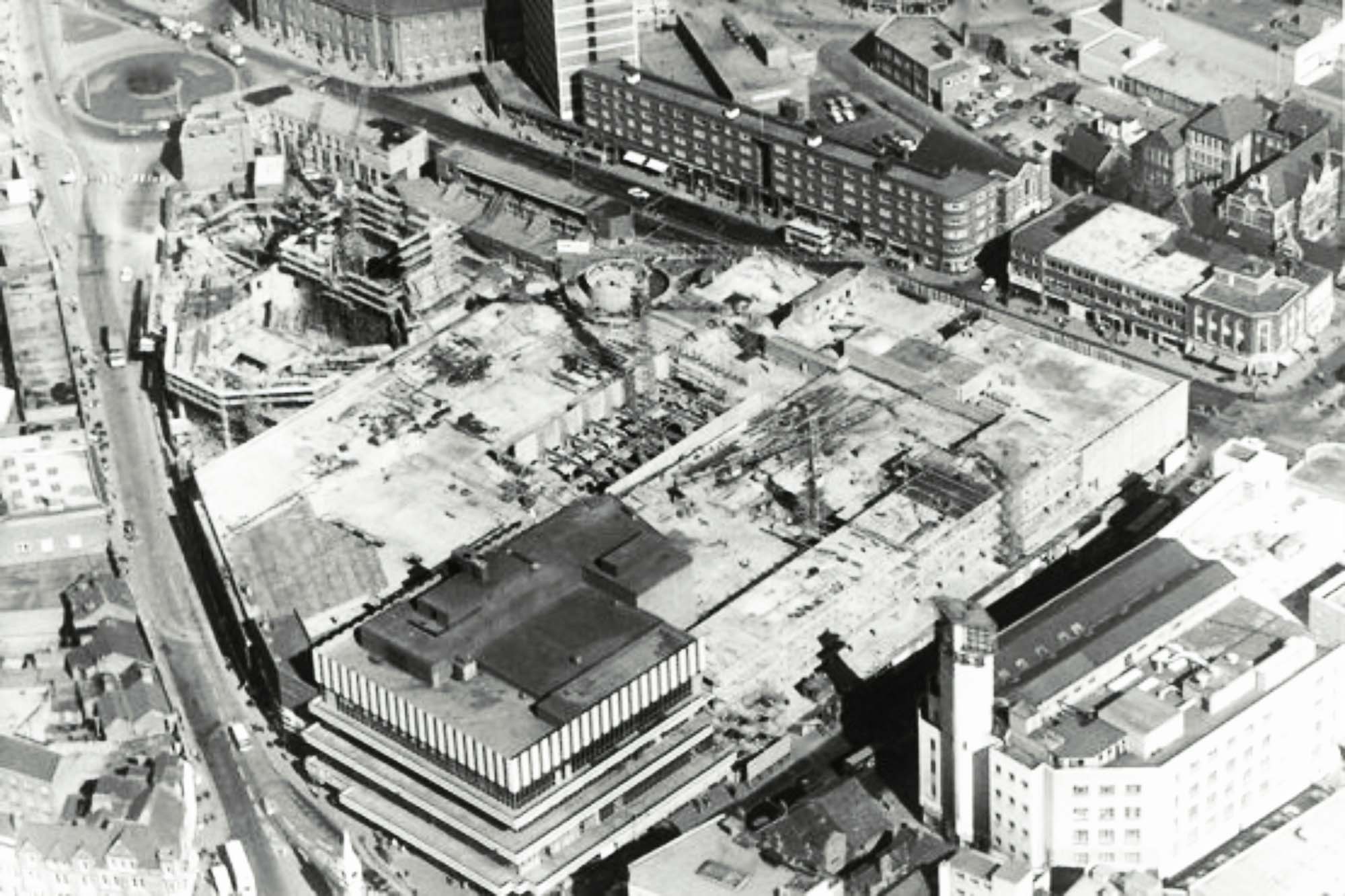
Leicester Mercury
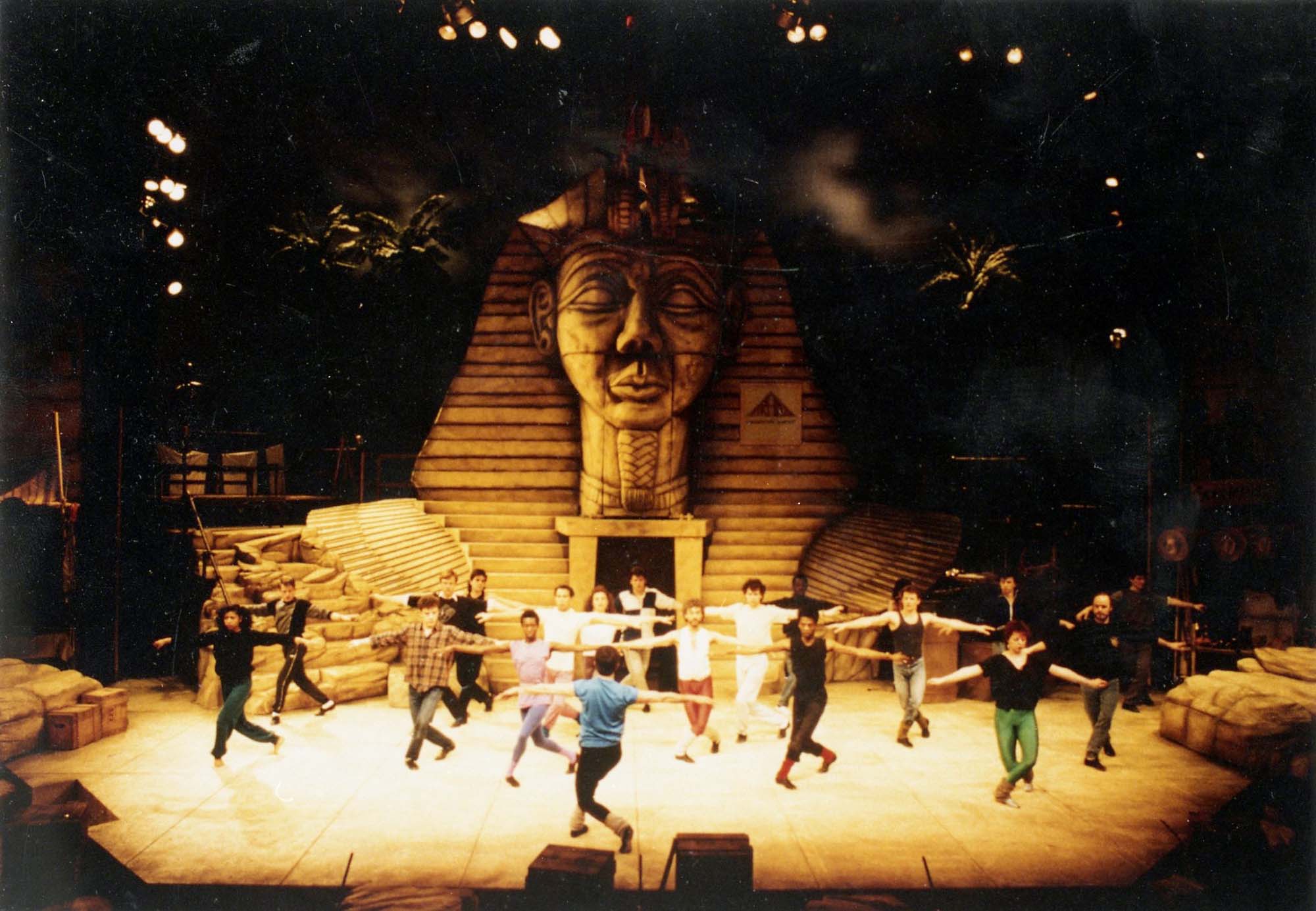
Leicester City Council

Leicester City Council

Leicester City Council

Leicester City Council
Roman Leicester
(47- 500) A military fort was erected, attracting traders and a growing civilian community to Leicester (known as Ratae Corieltauvorum to the Romans). The town steadily grew throughout the reign of the Romans.
Medieval Leicester
(500 – 1500) The early years of this period was one of unrest with Saxon, Danes and Norman invaders having their influences over the town. Later, of course, came Richard III and the final battle of the Wars of the Roses was fought on Leicester’s doorstep.
-
The Castle Motte1068

-
Leicester Cathedral1086

-
St Mary de Castro1107

-
Leicester Abbey1138

-
Leicester Castle1150

-
Grey Friars1231

-
The Streets of Medieval Leicester1265

-
Leicester Market1298

-
Trinity Hospital and Chapel1330

-
Bow Bridgecirca 1350

-
Church of the Annunciation1353

-
John O’Gaunt’s Cellar1361

-
St John's Stone1381

-
Leicester Guildhall1390

-
The Magazine1400

-
The Blue Boar Inn1400

-
The High Cross1577

Tudor & Stuart Leicester
(1500 – 1700) The wool trade flourished in Leicester with one local, a former mayor named William Wigston, making his fortune. During the English Civil War a bloody battle was fought as the forces of King Charles I laid siege to the town.
Georgian Leicester
(1700 – 1837) The knitting industry had really stared to take hold and Leicester was fast becoming the main centre of hosiery manufacture in Britain. This new prosperity was reflected throughout the town with broader, paved streets lined with elegant brick buildings and genteel residences.
-
Great Meeting Unitarian Chapel1708

-
The Globe1720

-
17 Friar Lane1759

-
Black Annis and Dane Hills1764

-
Leicester Royal Infirmary1771

-
New Walk1785

-
Freemasons’ Hall1790

-
Gaols in the City1791

-
Friars Mill1794

-
City Rooms1800

-
Development of Highfields1800

-
Wesleyan Chapel1815

-
20 Glebe Street1820

-
Charles Street Baptist Chapel1830

-
Glenfield Tunnel1832

-
James Cook1832

Victorian Leicester
(1837 – 1901) The industrial revolution had a huge effect on Leicester resulting in the population growing from 40,000 to 212,000 during this period. Many of Leicester's most iconic buildings were erected during this time as wealthy Victorians made their mark on the town.
-
Leicester Union Workhouse1839

-
Campbell Street and London Road Railway Stations1840

-
The Vulcan Works1842

-
Belvoir Street Chapel1845

-
Welford Road Cemetery1849

-
Leicester Museum & Art Gallery1849

-
King Street1850

-
Cook’s Temperance Hall & Hotel1853

-
Amos Sherriff1856

-
Weighbridge Toll Collector’s House1860

-
4 Belmont Villas1862

-
Top Hat Terrace1864

-
Corah and Sons - St Margaret's Works1865

-
Kirby & West Dairy1865

-
The Clock Tower1868

-
Wimbledon Works1870

-
The Leicestershire Banking Company1871

-
St Mark’s Church and School1872

-
Victorian Turkish Baths1872

-
The Town Hall1876

-
Central Fire Stations1876

-
Aylestone Road Gas Works and Gas Museum1879

-
Gas Workers Cottages1879

-
Leicestershire County Cricket Club1879

-
Welford Road Tigers Rugby Club1880

-
Secular Hall1881

-
Development of Highfields1800

-
Abbey Park1881

-
Abbey Park Buildings1881

-
Victoria Park and Lutyens War Memorial1883

-
Leicester Fosse FC 18841884

-
Leicester Coffee and Cocoa Company Coffee Houses1885

-
St Barnabas Church and Vicarage1886

-
Abbey Pumping Station1891

-
Luke Turner & Co. Ltd.1893

-
West Bridge Station1893

-
Thomas Cook Building1894

-
The White House1896

-
Alexandra House1897

-
Leicester Boys Club1897

-
Grand Hotel and General Newsroom1898

-
Highfield Street Synagogue1898

-
Western Park1899

-
Asfordby Street Police Station1899

-
Leicester Central Railway Station1899

Edwardian Leicester
(1901 – 1910) Electric trams came to the streets of Leicester and increased literacy among the citizens led to many becoming politicised. The famous 1905 ‘March of the Unemployed to London’ left from Leicester market when 30,000 people came to witness the historic event.
-
YMCA Building1900

-
The Palace Theatre1901

-
Pares's Bank1901

-
Coronation Buildings1902

-
Halfords1902

-
High Street1904

-
George Biddles and Leicester's Boxing Heritage1904

-
Municipal Library1905

-
Leicester Boys Club1897

-
The Marquis Wellington1907

-
Guild Hall Colton Street1909

-
Women's Social and Political Union Shop1910

-
Turkey Café1901

Early 20th Century Leicester
(1910 – 1973) The diverse industrial base meant Leicester was able to cope with the economic challenges of the 1920s and 1930s. New light engineering businesses, such as typewriter and scientific instrument making, complemented the more traditional industries of hosiery and footwear manufacturing.
-
Dryad Handicrafts1912

-
De Montfort Hall1913

-
Leicester During the First World War1914

-
Fox’s Glacier Mints1918

-
Statue of Liberty1919

-
Housing in Saffron Lane1924

-
Winstanley House1925

-
Housing in North Braunstone1926

-
Lancaster Road Fire Station1927

-
The Little Theatre1930

-
Saffron Hill Cemetery1931

-
Braunstone Hall Junior School1932

-
Former City Police Headquarters1933

-
Savoy Cinema1937

-
Eliane Sophie Plewman1937
-
City Hall1938

-
Athena - The Odeon Cinema1938

-
The Blitz in Highfields1940

-
Freeman, Hardy and Willis - Leicester Blitz1940

-
Leicester Airport1942

-
Leicester’s Windrush Generations1948

-
Netherhall Estate1950
-
Housing at Eyres Monsell1951

-
Silver Street and The Lanes1960

-
Bostik1960

-
Auto-Magic Car Park (Lee Circle)1961

-
University of Leicester Engineering Building1963

-
Sue Townsend Theatre1963

-
Central Mosque1968

-
Belgrave Flyover1973

Modern Leicester
(1973 – present day) Industry was still thriving in the city during the 1970s, with the work opportunities attracting many immigrants from all over the world. While industry has declined in recent years, excellent transport links have made Leicester an attractive centre for many businesses. The City now has much to be proud of including its sporting achievements and the richness of its cultural heritage and diversity.
-
Haymarket Theatre1973

-
The Golden Mile1974

-
Acting Up Against AIDS1976

-
Belgrave Neighbourhood Centre1977

-
Diwali in Leicester1983

-
Leicester Caribbean Carnival1985

-
Samworth Brothers1986

-
Jain Centre1988

-
Guru Nanak Dev Ji Gurdwara1989

-
King Power Stadium2002

-
LCB Depot2004

-
Curve2008

-
BAPS Shri Swaminarayan Mandir2011

-
Makers Yard2012

-
VJ Day 80th Anniversary2020

- Roman Leicester
- Medieval Leicester
- Tudor & Stuart Leicester
- Georgian Leicester
- Victorian Leicester
- Edwardian Leicester
- Early 20th Century Leicester
- Modern Leicester
Leisure & Entertainment
















































































































































